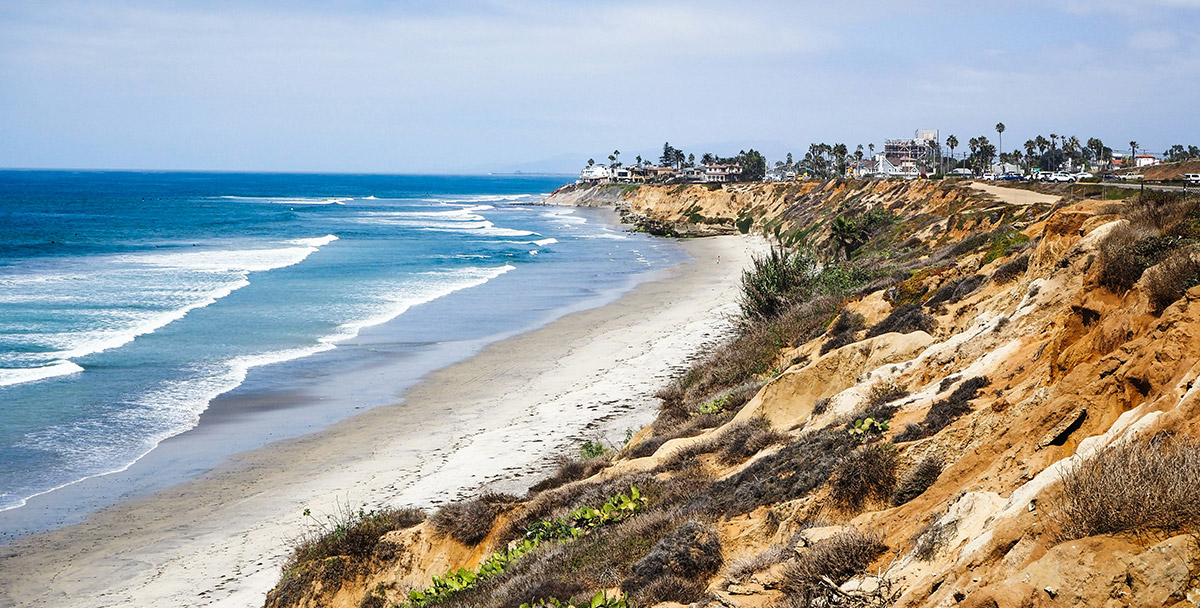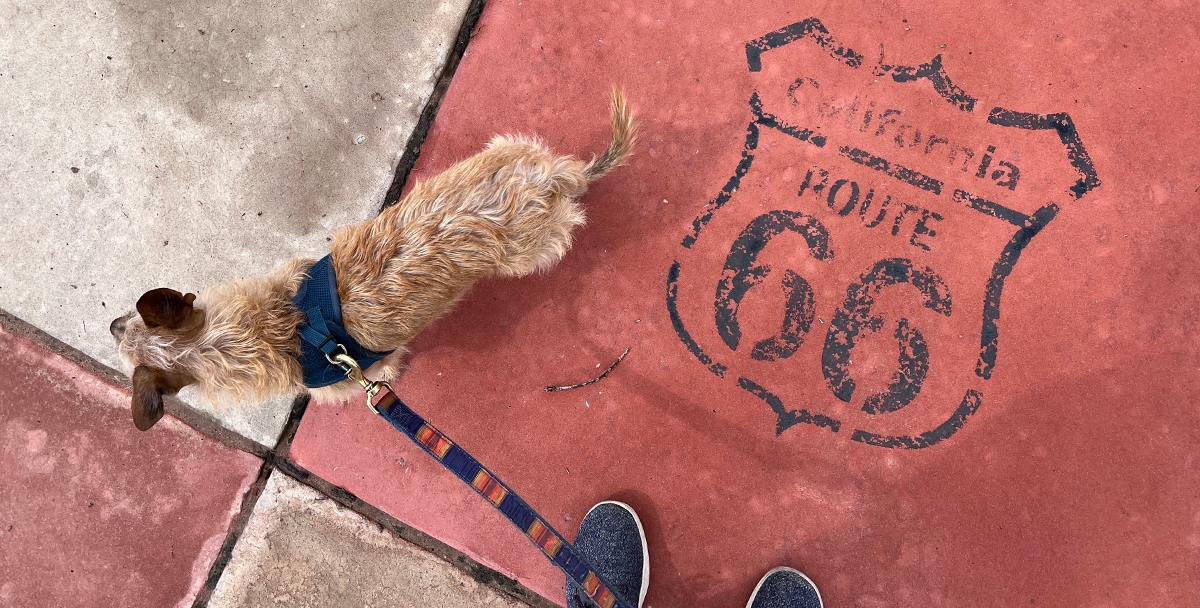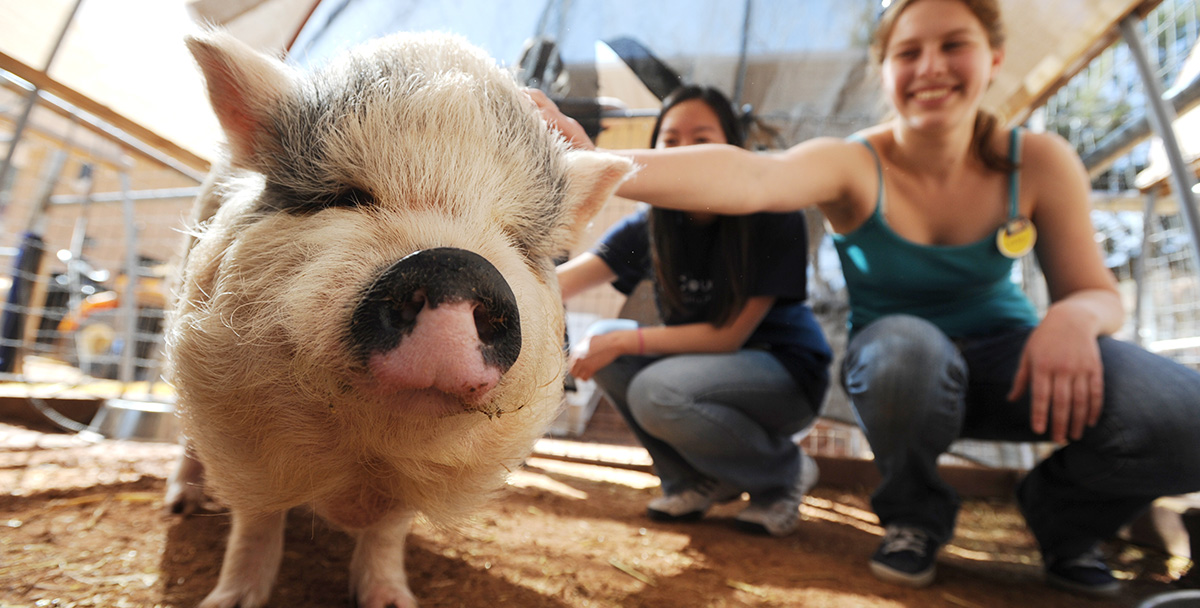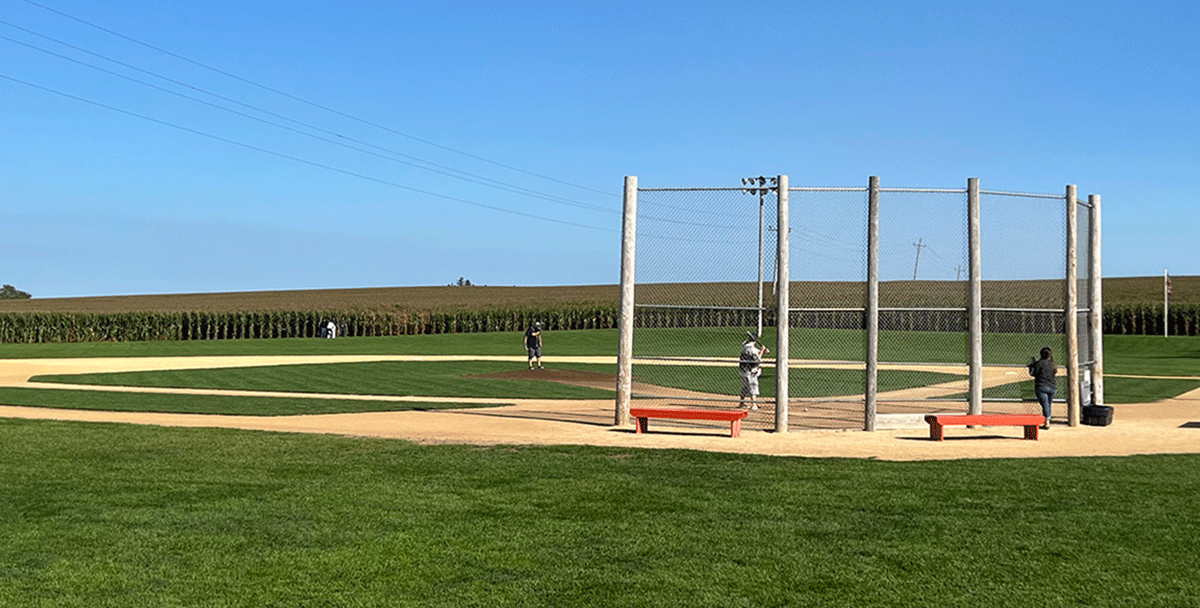When my nieces visited from New Jersey to experience the joys of the Midwest, they didn’t want to try barbecue or drive Route 66. They had their hearts set on one attraction: the World’s Largest Fork in Springfield, Missouri.
The fork doesn’t light up. It doesn’t move. It’s simply 35 feet tall.
“It was really big,” my eldest niece said after we made the trip to stare at the fork.
“I thought it would be bigger,” her little sister said.
My nieces got me thinking about the great big world of, well, great big things. From the World’s Largest Catsup Bottle® in Collinsville, Illinois, to Lucy the Elephant, the 65-foot, 139-year-old wooden elephant in Margate City, New Jersey, oversized objects are baked into the narrative of the American road trip. You see the billboard advertising the giant piece of flatware, and you pull off the highway.

My favorite store as a kid was Think Big in New York City, which produced large versions of everyday objects. Back then, even a 4-foot Crayola® crayon held some kind of spell over me. Now? I was impressed by the fork, sure. I kept imagining how big of a hand I would need to try and hold it.
But the sense of wonder I would have felt as a child was replaced by more practical curiosity: Why would someone go to the trouble of building something that’s only purpose is to be very, very big? Is it really just so I’ll stop and spend a few dollars at the local diner? I want there to be something more.
The sun is just starting to rise when I set out for the small town of Cawker City, Kansas, to see the World’s Largest Ball of Twine.
“It’s how far of a drive?” my wife asks.
“A little over three hours,” I say. It’s closer to four, but I’m not ready to say that out loud. I kiss my kids, who are still asleep, and leave.
Kansas City falls away as billboards promise me salvation at churches and riches at casinos. The highway goes from three lanes to two. Ten miles outside of Cawker City, Google Maps tells me that “ball of twine is 9.9 miles on your left.”
Excitement should always come with a countdown. I pass a bar and the city’s municipal offices. And then, suddenly, there’s the twine ball, encased in an open-air gazebo. A smiling white-haired woman waves me to a stop.
“I’ve been called the crazy twine lady. The Wall Street Journal called me ‘the belle of the ball,’” Linda Clover says as she leans into her car and grabs a handmade twine roller, a length of coarse yellow string that’s been fitted over a piece of white plastic pipe.
The retired librarian and twine tour guide for the past 23 years tells me the story of the ball as we walk up the steps to the gazebo. In 1953, Frank Stoeber, a local farmer, began wrapping his excess twine – used to secure hay bales – into a ball. “He wasn’t trying to do anything grand,” Clover says. But over the next two decades, his neighbors brought twine to add to the ball. Stoeber logged the donors’ names in a notebook, which became a living history of the people from Cawker City.
“People come for a funeral or reunion and they might not know their relative, but they know the story of how their grandpa or great-grandpa gave the man twine,” Clover says.
In 1973, the Guinness Book of World Records declared Stoeber’s creation the largest ball of twine in the world. The ball was donated to Cawker City before Stoeber’s death the following year and put on display. (The record has since been usurped by J.C. Payne of Valley View, Texas, but the Cawker City ball retains its moniker.)
“Why do people come?” Clover says. “They come because you can get right up to it. You actually touch it.”
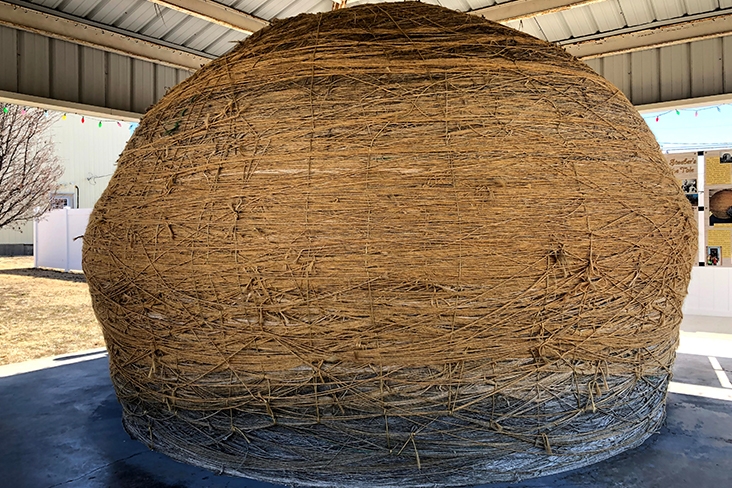
The straw-colored ball is rougher than I expected. It smells of earth and musk. Clover asks if I want to add some twine. We walk around the ball together.
“You have done it,” Clover says solemnly. “You have added a little bit of twine.”
The scale of the ball is mind-boggling. It stretches more than 12 feet tall and 45 feet across. The 8,371,227 feet of twine weighs 26,993 pounds. Clover shows me a Post-it® Note with her latest stats.
“People say there’s nothing here,” Clover says. “But there’s a lot. This helps them remember that.”
She tells me that folks in the town of about 415 people will pass by and honk if they see someone. Not a minute later, a white pickup truck rumbles past with a honk and a wave from the man in the passenger seat. I look down at my watch and am stunned that an hour has passed. Clover tells me that if I want a souvenir, I have to get to the municipal office before it closes for lunch at noon.
The trip, so far, is going as I had hoped. Yes, Cawker City is cashing in on its massive ball of twine – even I buy a souvenir T-shirt – but the origin story is quirky and sincere. When I meet Erika Nelson, an artist in nearby Lucas, Kansas, I learn the genesis of big things is not always so organic.
Nelson has spent the past 21 years visiting oversized roadside attractions. When small towns want to be the next Cawker City, she acts as a consultant, helping find ways to turn civic pride into large-scale art projects that can pull in tourists. “As people are searching for the best selfie spot, towns are trying to take advantage of that,” Nelson says.
A restaurant in Creede, Colorado (population: 309) built a 40-foot-tall fork nine years ago, displacing Springfield’s fork as the biggest. And four cities claim to have the World’s Largest Ball of Twine.

Still, Nelson has a genuine passion for very big – and very small – things. She runs a museum in Lucas called the World’s Largest Collection of the World’s Smallest Versions of the World’s Largest Things, filled with miniature reproductions of oversized roadside attractions.
“There wasn’t a souvenir [that looked like] the actual ball of twine” in Cawker City, Nelson says. “So, I started making my own.” Today, her public collection houses just some of the roughly 200 models she has created. There’s a tiny rubber band ball made to mimic the 9,032-pound original in Florida and a sculptured clay tribute to Carhenge, the Nebraska automobile homage to Stonehenge.
Initially, making these miniatures was about doing something creative to pass the time on solo road trips. But over time, Nelson recognized that this was a way to “honor art that was outside of traditional museums.”
I consider my stop at the World’s Largest Ball of Twine. The scale of the ball demanded that I pay attention, as much as I would to a sculpture in an art museum. Maybe more. For an hour, I forgot about my phone and my responsibilities. I marveled that a farmer and a town would spend 68 years building something and then trust me and others to not mess it up.
On the drive home, I wonder about all the slightly out-of-the-ordinary things I glimpse along the way. What’s up with the bright green tires stacked to look like a frog in someone’s yard? I may never know. Nobody is home when I knock on the door.

“You have to listen to that little tiny voice,” Nelson says. “The one that says, ‘What was that? Turn around.’”
At dinner that night, I tell my children about Nelson’s museum and the World’s Largest Ball of Twine.
“Just how big was it?” asks my daughter.
“What’s a rubber band ball?” asks my son.
We talk about string. And spools of string. And the difference between a twine ball and a rubber band ball. And our next trip, wherever we may go. I see wonder in their eyes. I feel it too.

